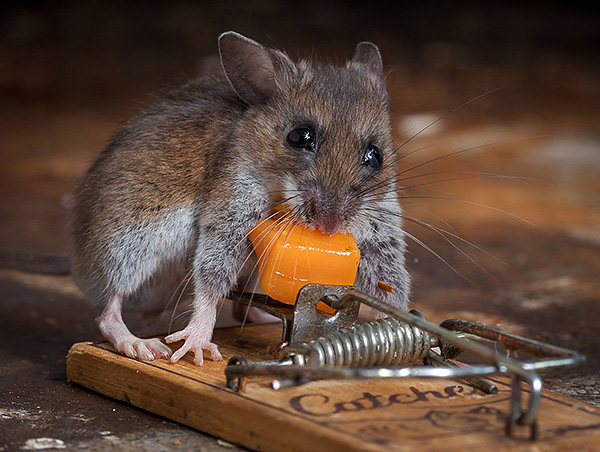
Almost always, when the fight against rodents begins, the question arises of choosing an effective bait for rats (including mice). This can be either a special poisoned bait that the pest needs to eat, or just a certain food product that rats really like and which is placed in a trap to effectively attract rodents.
And practice shows that the more attractive the rat will be the bait, the sooner they will be able to poison or catch. The animal must have a stronger desire to feast on fear of an unusual construction or suspicion of a new food product for him.
Accordingly, the question is what rats love the most. At the same time, thanks to cartoons, the widespread misconception that rats and mice love cheese most of all, but in reality this is just a myth - Yes, they will eat it, but they may not climb into the trap after it.
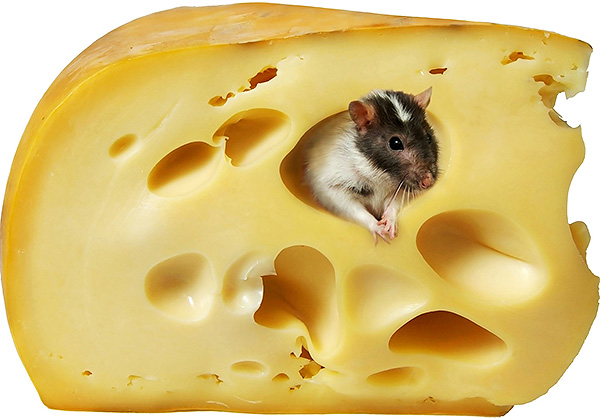
Stuffing? Milk? It is already warmer, but these products are not at all the most favorite delicacy of rodents.
The task is further complicated by the fact that populations of rodents living in different conditions (in a private house, in a sewer, in a garden plot or in a landfill) can have their own food preferences. Nevertheless, the practice and experience of many deratizers found the best bait for rats that work almost always efficiently. We’ll talk more about them in more detail ...
What do rats and mice like?
Both professional disinfestants who are engaged in the extermination of rodents almost every day, and the biologists who study these animals are well aware that rats mainly like animal products, and mice prefer plant foods. Moreover, this is not a strict rule, but rather a general characteristic of food preferences: for example, mice also often do not mind eating a piece of fat or meat, and rats, with all their love for meat feeds, will not give up grain, and being hungry even from a piece apples.

On a note
It is not for nothing that poisoned barley is used in many enterprises to fight rats - not the best bait, but more or less effective, especially when rodents do not have other food available.
With that said, good options for rat baits are, for example, the following:
- Fat;
- Sausage;
- Minced meat;
- Egg;
- Fish;
- Cheese.
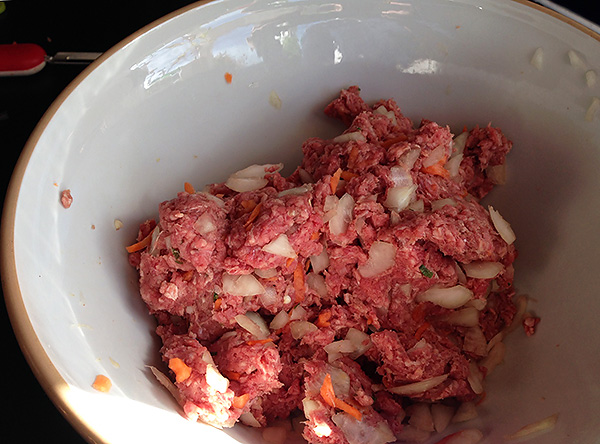
As for mice - for them, the bait may be as follows:
- A slice of apple or pear;
- A slice of peach or apricot;
- A slice of plum;
- Fresh bread (preferably moistened with sunflower oil);
- Porridge (boiled).
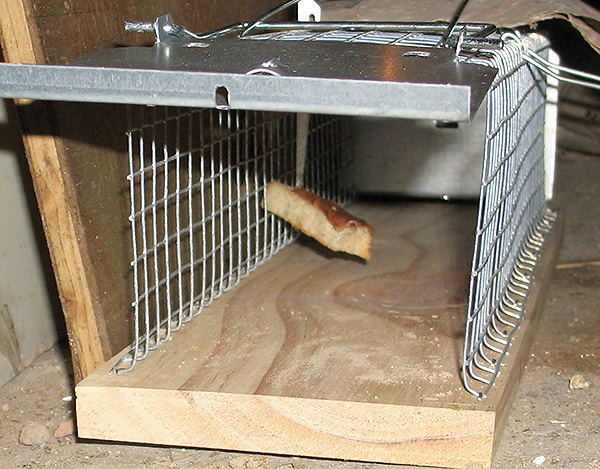
It often happens that individual baits literally hypnotize rats, but mice remain completely indifferent to them. Therefore, deciding what to put in the trap, you need to clearly understand who exactly you plan to lure into this trap: a rat or a mouse.
On a note
A common situation: the landlord finds gnawed bread or cereal sprinkled from a bag, but does not know for sure if the rat is a bully or a mouse. And a trap with a piece of apple for a mouse can stand untouched for several days, disappointing the owner of the room, while a rat, calmly indifferent to this bait, lives quietly in the house.
Conclusion: if there is no certainty about whether rats or mice are hosting the house, then it is advisable to test different types of lures, choosing products of both plant and animal origin (or lay both versions of the lures in a trap at the same time).
An important nuance is also important: it’s not convenient to put any bait in a trap, as well as not every rat treat should be mixed with poison. Therefore, for one way to fight, one bait is suitable, and for another - other.
Let's see what and in what cases it makes sense to apply.
Traps rats
Often, one of the main requirements for bait used in rat traps is a dense consistency. The fact is that in many traps, a treat needs to be put on a hook - the animal will pull on it and lower the corresponding mechanism. It is clear that minced meat or egg yolk for such cases will not work.
The second requirement is a strong smell. A rat, even while away from the trap, must inevitably want to try the delicacy and be ready to overpower its caution and fear.
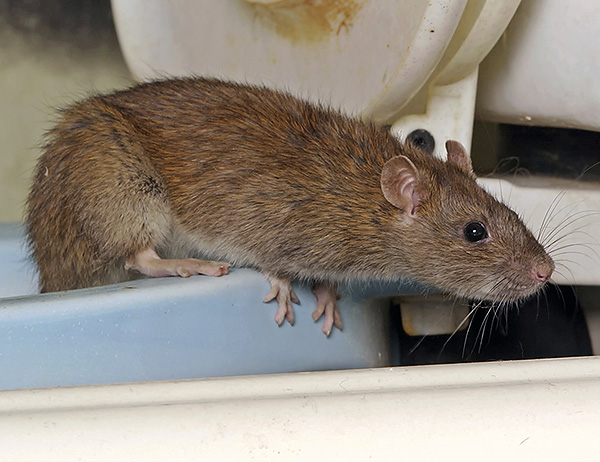
In this regard, the following rat lures have worked well:
- Smoked sausage;
- Cold smoked fish;
- Salo (in the ideal case, with the edge singed above the fire);
- Cheese (preferably smoked);
- A crust of bread, sprinkled with vegetable oil (preferably unrefined, smelling strongly).
The photo below shows an example of a mousetrap in which a rat fell on a piece of sausage:
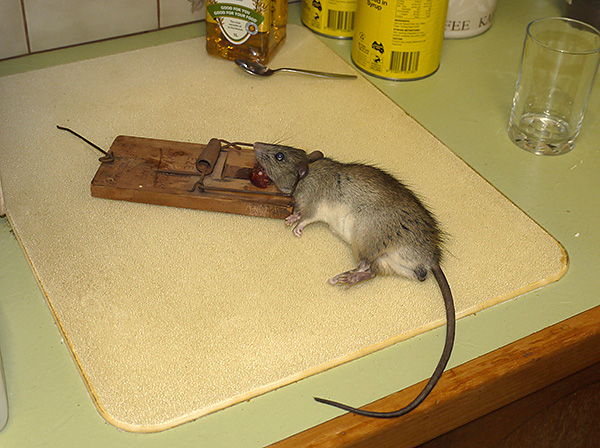
However, there are traps that trigger under the weight of the animal. They do not need the rat to pull the bait, it is only important to attract the pest and make it climb inside the trap. In these cases, you can use not only the bait listed above, but, for example, such:
- Raw minced meat (preferably with onions);
- Roasted seeds or nuts;
- Chocolate.
If some bait does not attract rats or mice for more than three or four days (especially when the trap itself is installed every night in a new place), then such a bait must be replaced. In addition, it is useful to replace even a well-functioning bait with a fresher one every day or two - its smell gradually weakens and it attracts rats worse.
For tunnel traps (and other partially enclosed structures) this is especially important - the delicacy aroma must be strong enough to leave the rat trap and spread through the room, which is slower than, for example, from open mousetraps.
Another important point that many fighters with rodents do not take into account: at any stage of working with the bait, it is not recommended to touch it with bare hands, otherwise the human smell will scare away rodents.
Rat Poison Bait
In order to prepare effective poison for rats at home (for example, on the basis of Zookumarin or Rat), it is advisable to use baits in which the poison can be easily homogenized with a food base.
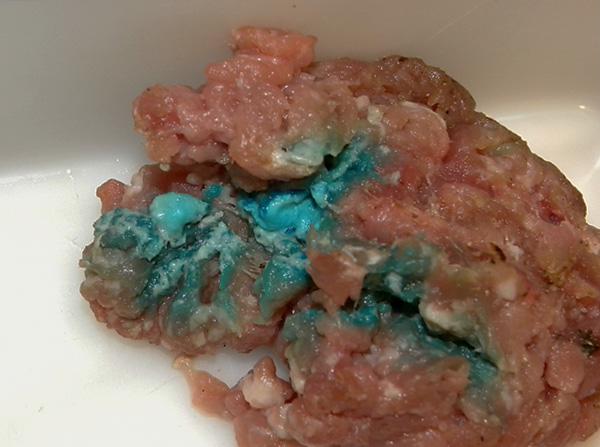
For example, for rats and mice in this regard, the following basics for lures are not bad:
- Beer - oddly enough, but rats and mice are often unable to resist it;
- Milk;
- Soup on meat broth;
- Again, raw minced meat, preferably with bacon and onions;
- Finely chopped boiled egg;
- Dough with seasonings and spices;
- Boiled porridge, especially with vegetable oil.
Poison is simply added to the food base in the proportions indicated for each drug in the instructions, and the whole mixture is thoroughly mixed. After that, the prepared poisoned bait is laid out on a cardboard or saucer (in the case of liquid means, it is poured into a plate) and placed where rats are most likely to find it quickly. All work is done in rubber gloves.
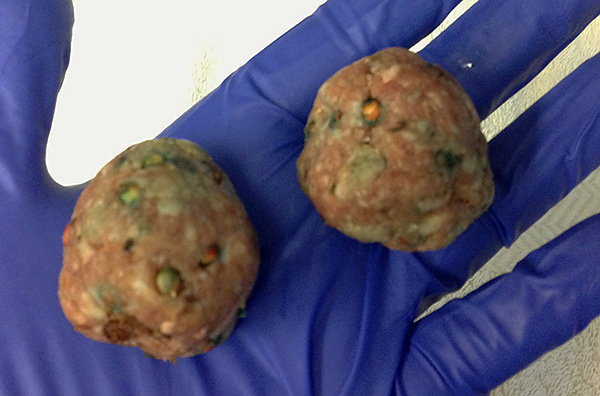
It is important to take measures to prevent pets and children from reaching such a bait. A little later, this will be discussed in more detail.
On a note
It is from the test that the vast majority of rat poison from industrial production is prepared. Its charm lies in the fact that the bait is quite dense, but not rigid, does not fall apart and leaves no traces. In addition, dough briquettes can be easily placed almost anywhere, they are much more convenient than plates with soup or milk.
Take, for example, such means as Mortorat, Rat Death No. 1 and No. 2, Absolon, Ratobor, etc. - these are flavored briquettes of the test with blood anticoagulants as an active substance (anticoagulants are one of the most effective rat poisons today). Such a briquette can be placed even in the most inaccessible places, where the saucer with liquid bait does not fit exactly.
Nevertheless, at home, instead of dough, it is often preferable to use minced meat, which rats like more and which due to its own strong smell does not require the addition of flavorings.
A strong smell is also needed in order to mask the aroma of poison in the bait. Rats are very suspicious and have a very acute sense of smell. If they suspect the presence of a dangerous impurity in a treat (or a human smell), then they will never be touched. Therefore, the stronger the food base will smell, the more likely it is that the rat will be able to poison.
Recipes for preparing poison for rats with different baits and poisons
Generally speaking, recipes for poisoned baits for exterminating rats and mice can be very diverse, it is only important to adhere to the above rules when choosing a food base and observe the proportions indicated in the instructions for use of the corresponding poison (so that the rat does not notice the danger).
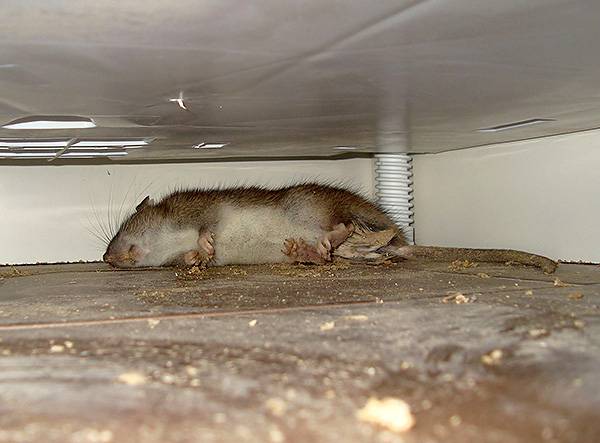
Here are some ready-made recipes that have been tested many times in practice and in most cases give a good result when fighting rats:
- 100 grams of minced meat (it doesn’t matter, meat, or fish), 850 grams of crushed bread and 50 grams of Zookumarin;
- 870 grams of crushed bread, 100 grams of onions fried in vegetable oil, and 30 grams of Ratindan;
- 890 grams of crushed bread, 100 grams of vegetable oil and 100 grams of rats;
- 700 grams of crushed bread, 150 grams of mashed potatoes, 50 grams of vegetable oil and 30 grams of Ratindan;
- 990 grams of cool wheat or oat porridge-smear and 10 grams of rats.
For these recipes, poisons in the form of powders (dusts) are taken - they are sold in hardware stores.

The ingredients of all recipes are simply thoroughly mixed and portioned, about a teaspoon, are laid out in places where rats can easily find them.
On a note
Also known are folk recipes for poison for rats based on milk and alabaster, as well as containing chilibuha infusion - vomit as an active ingredient. However, they are significantly less effective compared to poisons based on blood anticoagulants (which include Zookumarin) and Rat.
In addition, it should be borne in mind that today there are many ready-to-use poisonous baits for rodents on sale: in the form of briquettes of dough, hard granules, poisoned grain, etc. It is often easier (and safer) to buy ready-made preparations than to make poisoned baits by yourself.

Mouse specificity
Generally speaking, mice, unlike rats, are more fond of cereals, cereals, fruits and vegetables, rather than animal products. Nevertheless, one of the most reliable baits in a mousetrap is rightfully considered a piece of bacon, slightly fried with a match on one side.
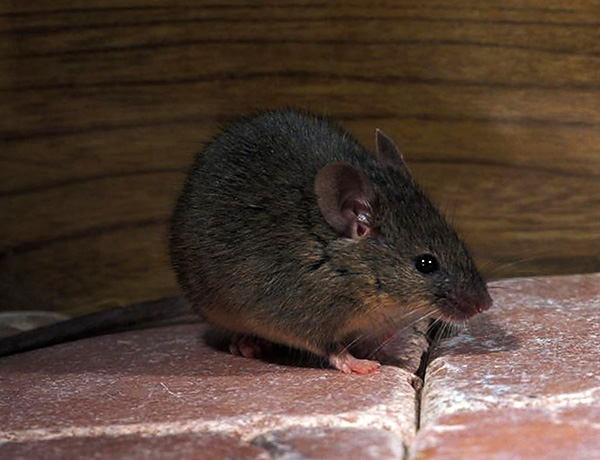
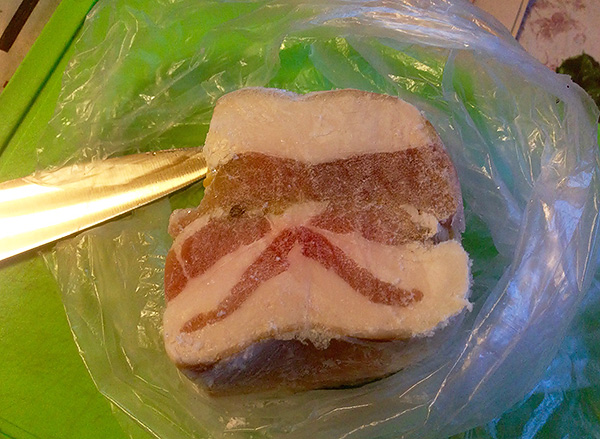
In addition to fat, the mouse trap can be charged:
- A crust of bread moistened with vegetable oil;
- A slice of apple or pear;
- Walnut kernel;
- A piece of smoked sausage (which attracts rats well).
Mice are generally less suspicious of baits than rats.
On a note
As for cheeses, of which there is a great variety on sale, here the opinions of fighters with rodents differ. Some consider the use of cheese to capture mice to be an absolutely ineffective activity, while others, on the contrary, say that mice fall into mousetraps quite well on certain brands of odorous cheese.
Be that as it may, cheese can hardly be called the product that mice or rats love the most.

In mousetraps in which the bait is not attached to the gatehouse, in addition to all of the above products, you can also put fried seeds, fried peanuts, rye crackers and oatmeal cookies.
As a food base for mouse poisons, cereals, mashed potatoes and dough are good, all with the addition of vegetable oil. These mouse baits are the most versatile and easy to prepare. As a poison, you can use the same Zookumarin, Krysid and Ratindan.
What to do to prevent the bait from pets
With all the troubles associated with the preparation of effective rat baits, one should not forget about the safety of their use. The same minced meat, sausage, milk and even dough are loved not only by rats, but also by cats and dogs. In addition, a small child may well find such a bait. Pets and children can get injured by trying to get a treat from a spring trap (the simplest example of which is a common mousetrap), or they can get poisoned by eating a poisoned bait.

To prevent this from happening, bait should be placed where no one except the rodents themselves can find them (or reach them). Such inaccessible places in the house are, in particular, the spaces under the bedside tables and the refrigerator in the kitchen, the internal cavities of the cabinets and cabinets, the shelves in the pantry. Of course, when placing the bait here, you need to be sure that there are also rats in these places.
A much more effective and safe approach is to place the bait or traps with it in special container houses (they are also called bait stations).
They are boxes with several entrances, through which only a rat or mouse can climb inside. Neither a cat, nor a dog, nor, moreover, a child, can get the bait out of there, but the box itself, fragrant with minced meat or vegetable oil, can be placed exactly where rats are most often - even in the center of the kitchen.

Some industrial poisons are already sold with such a house, but more often houses need to be bought separately. Such containers cost an average of 300 to 2,000 rubles. For example, a rat container for bait (manufacturer of the NKF “Rat”) in St. Petersburg will cost 300 rubles, and the Bora bait station will cost about 1300 rubles.
Such a container can be made with your own hands from a regular cardboard box. In the lower part of the two opposite walls of the box, you need to cut holes with a diameter of 5-6 cm, then put the bait inside and glue the lid with tape. When checking, the adhesive tape comes off and the box opens.
And remember: sometimes rats are especially suspicious of baits. Perhaps the standard delicacies will not seduce them, and you will need to catch pests on a bait that will have to be calculated by trial and error - be prepared for this. In any case, remember that rats, like any other living thing, need to eat regularly, and several times a day they are hungry. So, bringing them into a trap (or poisoning) is just a matter of time and perseverance.
Interesting video: the cautious rat still fell into the trap with the bait
An example of an effective homemade trap for rats and mice

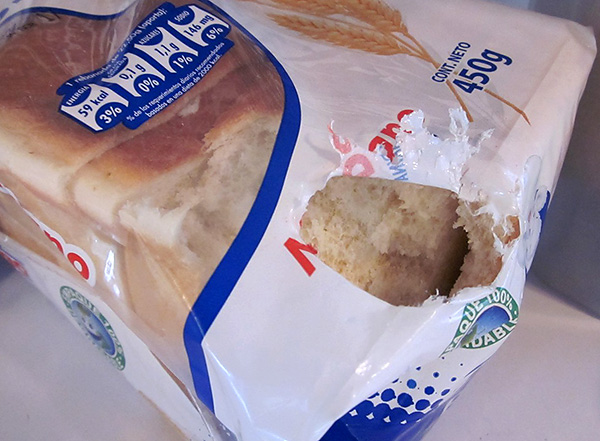
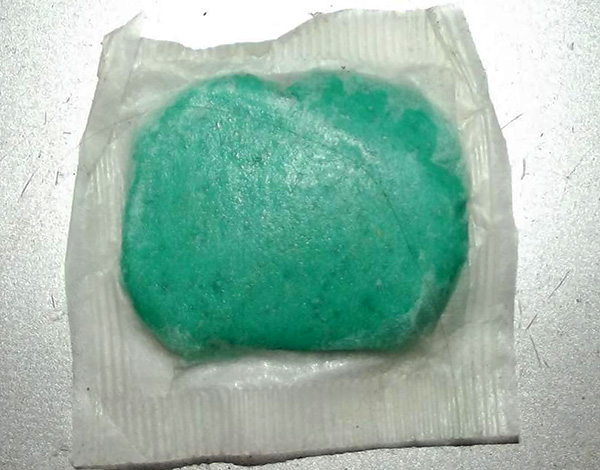
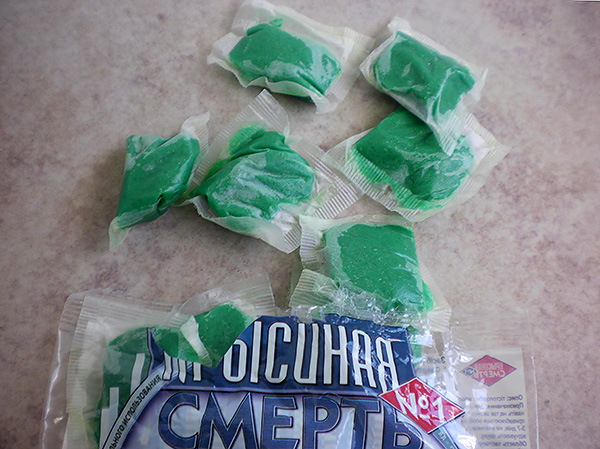

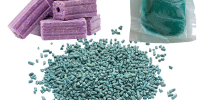
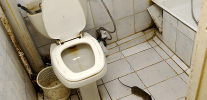
As for mice: the best I've tried is a crust of bread moistened with undeodorized sunflower oil. They sell such a muddy, sort of for salads. It stinks like seeds. So I made a trap from a three-liter can of water and a tipping bridge, put it in the annex. During the night, as many as 5 mice came to one crust.